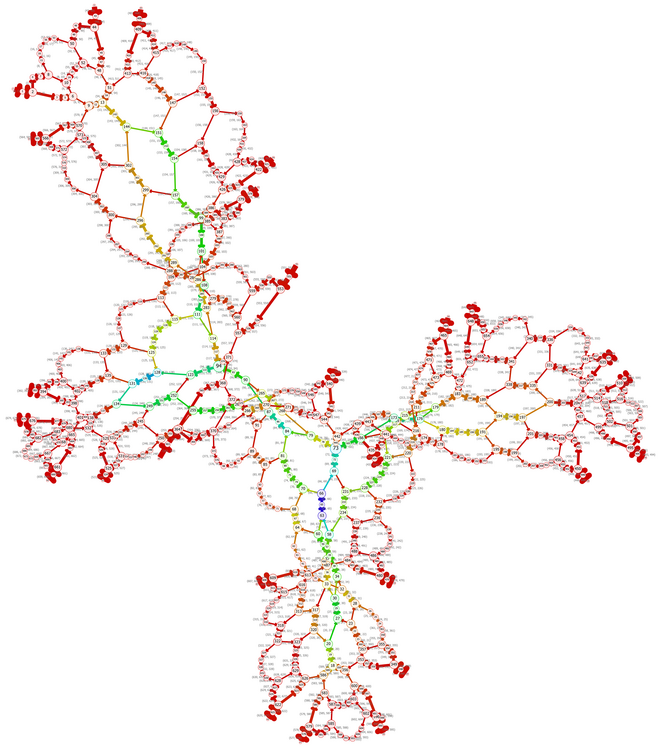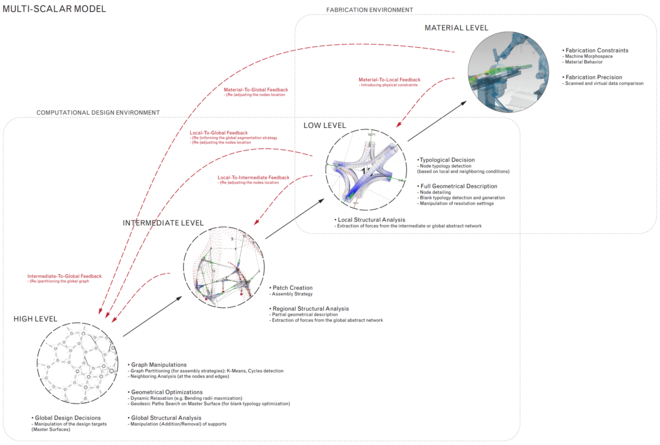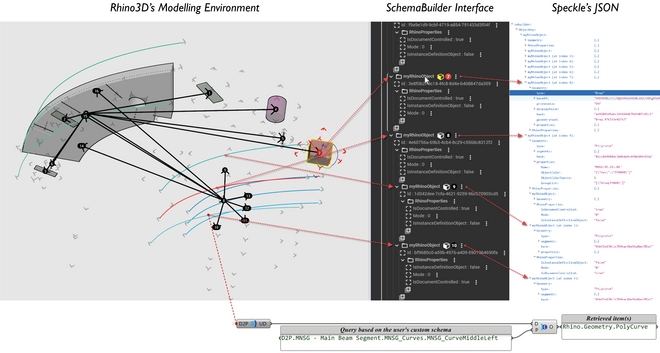
Paul Poinet: Multi Scalar Modelling for Building Design
The thesis examines the interdisciplinary concept of Multi‑Scalar Modelling through the scope of the AEC domain’s requirements to improve the existing design workflows in industry.

Where present modelling paradigms consolidate the ambition to interface different design environments through a unified model, such as Building Information Modelling (BIM), the ambition of the thesis is to articulate how Multi‑Scalar Modelling can support the creation of a network of models tuned to interface and communicate information across the design chain.
The present thesis takes as a starting point the Multi‑Scalar Modelling framework formulated and established by CITA through the conception, production and realization of precedent design probes, prototypes and demonstrators. Those demonstrators introduced Multi‑Scalar Modelling strategies enabling a direct communication between multiple scales, from material specifications at high resolution to the global design environment.
The thesis attempts to extend this theoretical framework by adapting it to the building scale through further inclusion of industry concerns and problematics, provided here by both BuroHappold and Design‑to‑Production: trying to keep a consistent, continuous design workflow throughout the whole design process, from early design to late stages.

Hence, the work contributes to the development of a theoretical position regarding the marriage or loose management and linking of early stage geometrical and attribute development, and late stage collaborative and multi trade management design in architecture, which is a much acknowledged problem in the profession and research domain.
This project has received funding from the European Union's Horizon 2020 research and innovation programme under the Marie Sklodowska Curie grant agreement No. 642877.


















